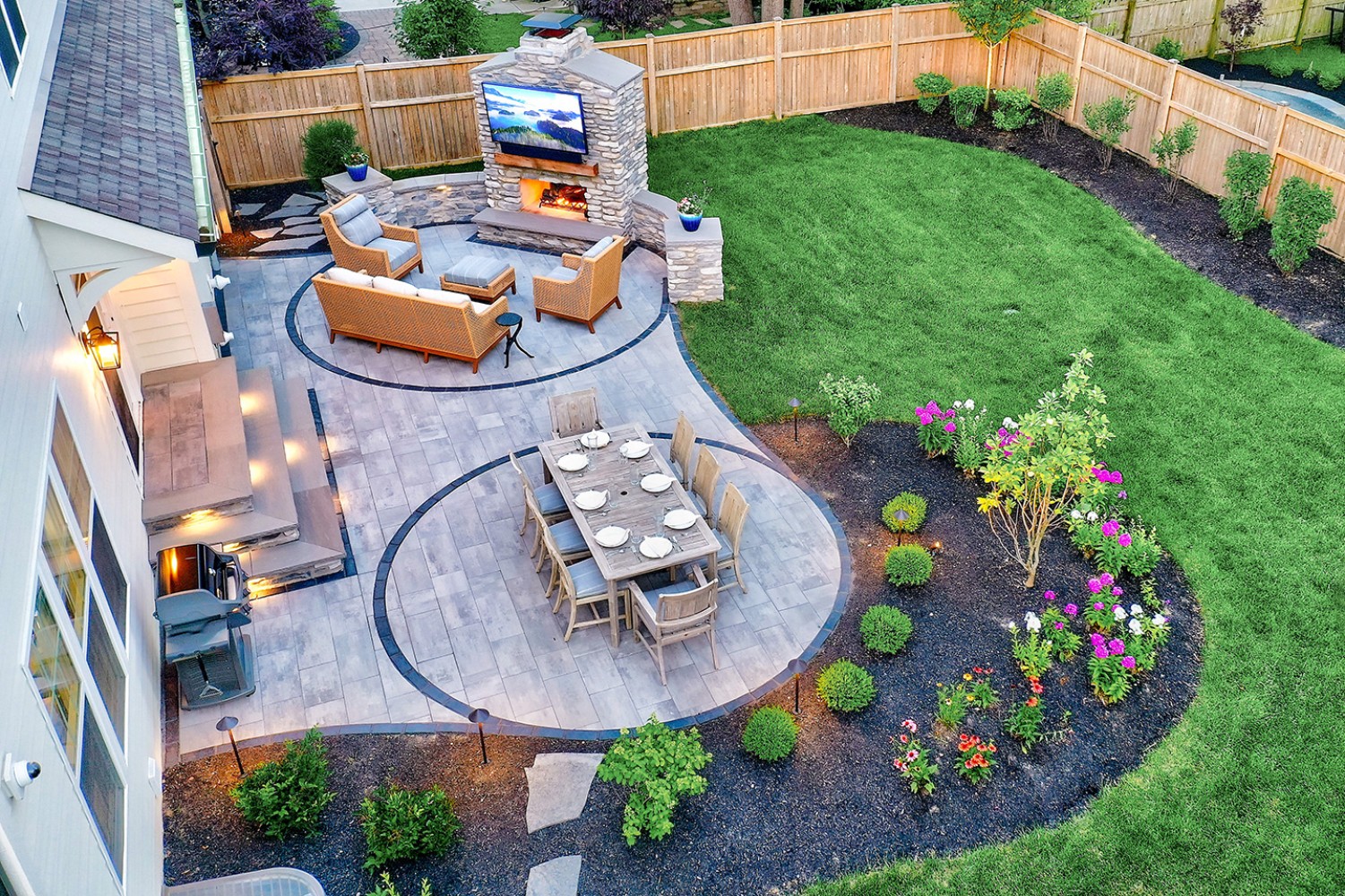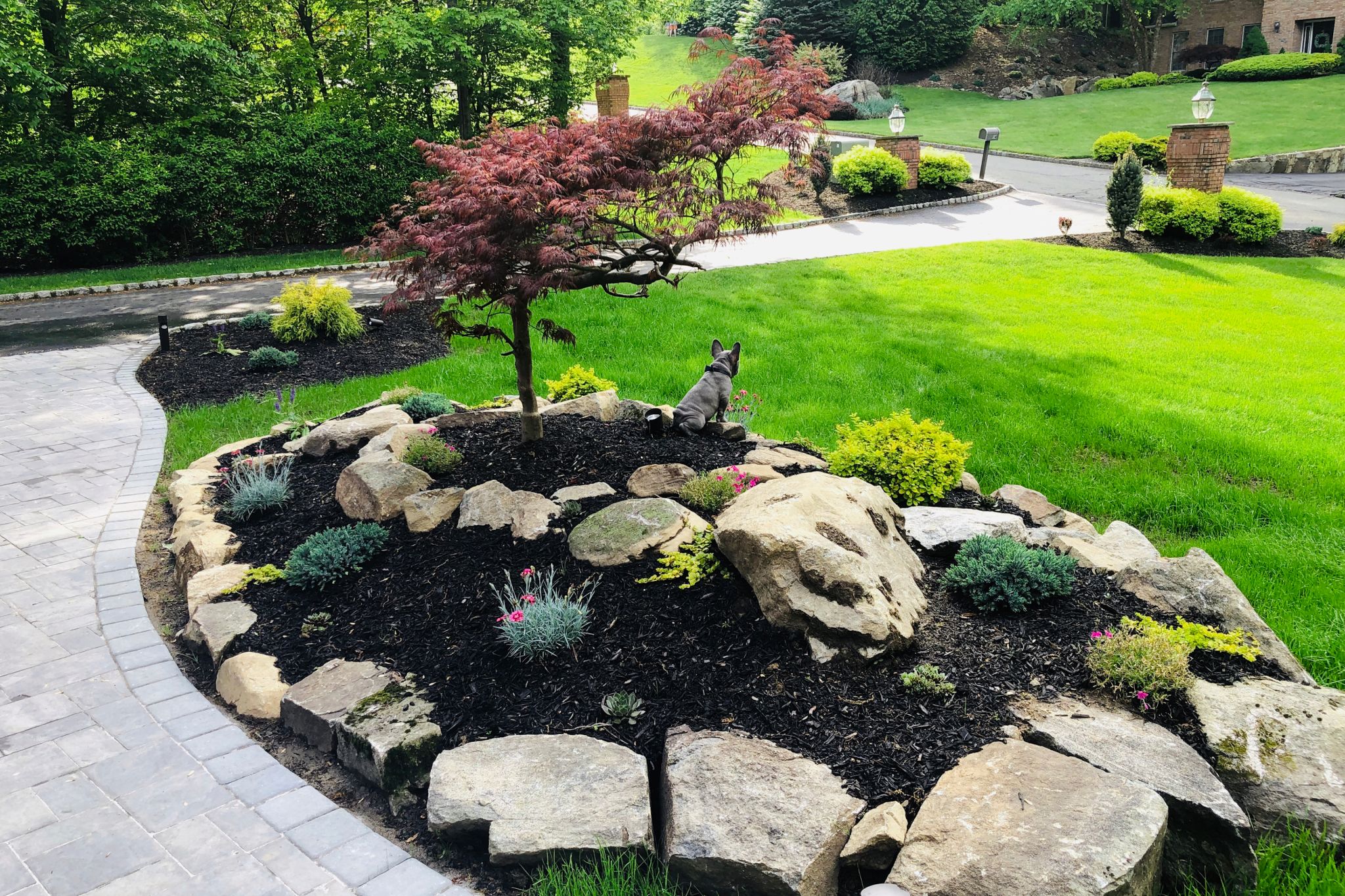Change Your Garden With Ingenious Landscape Design Methods and concepts
Transforming a yard requires thoughtful consideration of its special features. Effective landscape Design can enhance both capability and aesthetic charm. By checking out numerous methods, one can develop a space that not just shows personal style but additionally sustains regional biodiversity. As the trip unfolds, questions about plant choice, sustainability, and format emerge, triggering a much deeper expedition right into exactly how to make these concepts revive.
Analyzing Your Outdoor Space: Recognizing Your Yard's Prospective
Reviewing exterior space is necessary for effective landscape style. Understanding the one-of-a-kind attributes of a yard enables developers to optimize its possibility. Elements such as soil quality, sunlight exposure, and existing frameworks play a crucial function in determining what can be attained. Analyzing the topography aids identify areas for planting, paths, or water attributes, while noting water drainage patterns ensures that plants grow without waterlogging.
In addition, acknowledging the yard's microclimates can influence plant choice and placement. Observing just how the space is utilized by residents informs useful Design choices, such as seating locations or play zones. Furthermore, considering the surrounding setting and surrounding landscapes can offer inspiration and context for Design choices. By completely examining these components, one can produce a cohesive and inviting outside space that reflects the owner's vision while balancing with nature. Inevitably, a complete assessment lays the foundation for a successful landscape Design task.
Picking the Right Plants: A Guide to Shade, Appearance, and Seasonal Rate of interest
When selecting plants for a landscape layout, comprehending the interaction of color, appearance, and seasonal passion is vital for creating a dynamic and vibrant garden. Color can stimulate feelings and set the tone for the area; as a result, selecting a harmonious scheme improves visual allure. Cozy tones like oranges and reds produce energy, while cooler hues like blues and environment-friendlies offer serenity.
Texture includes deepness and dimension, allowing for a mix of vegetation sizes and shapes. Combining fine-textured plants with bold-leaved selections develops comparison and intrigue.
Seasonal passion is very important for keeping year-round charm. Selecting a selection of plants that bloom in different seasons warranties that the yard remains vibrant, changing from springtime's dynamic flowers to fall's rich foliage. By thoughtfully thinking about these components, one can curate a landscape that is not just cosmetically pleasing but appealing and also varied throughout the year.

Producing Functional Areas: Creating Spaces for Leisure and Amusement
Producing useful zones in a landscape Design improves the functionality of outside spaces, allowing homeowners to seamlessly mix relaxation and home entertainment. By thoughtfully separating areas right into distinct zones, people can cater to different activities, from silent retreats to vibrant celebrations. A well-designed room may integrate a relaxing reading space nestled amongst lavish plant, supplying a tranquil getaway (Artificial Grass). In contrast, a vivid exterior eating area can work as the ideal setting for celebrations with household and buddies
Tactically placed paths can guide guests between these areas, making sure simple navigation. In addition, integrating aspects like seating areas, fire pits, or water functions can boost the general setting and capability. The assimilation of different structures and shades in each area can create visual rate of interest while keeping a cohesive visual. Ultimately, creating practical zones allows property owners to maximize their exterior experience, transforming their yards right into versatile areas that meet diverse way of life requirements.
Integrating Hardscape Components: Patios, Walkways, and Focal Points
Including hardscape elements into landscape Design matches useful areas by providing structure and visual charm. Patios offer as important exterior home, allowing property owners to enjoy meals and celebrations in a specified area while enhancing access. The option of products, such as natural rock or concrete, can greatly affect the total aesthetic, blending perfectly with the surrounding atmosphere.
Sidewalks promote movement with the yard, directing visitors while including deepness and rate of interest. These courses can be crafted from numerous products, including crushed rock, pavers, or block, each adding to the yard's character.
Prime focus, such as attractive stones, sculptures, or water functions, attract the eye and develop a feeling of objective within the landscape. Strategically positioned, these components can change a regular garden into a fascinating room, welcoming expedition and interaction. With thoughtful integration of hardscape, a landscape ends up being not just functional yet additionally visually stunning.
Enhancing Personal Privacy and Safety: Natural Obstacles and Structures
To boost personal privacy and protection in landscape design, the use of natural obstacles such as thick hedges can effectively secure a residential or commercial property from unwanted sights. In addition, mounting privacy fences gives a solid structure that adds to a feeling of security and privacy. With each other, these aspects develop an even more intimate outside room while discouraging potential breaches.
Planting Dense Hedges
While many homeowners look for visual charm in their landscapes, growing thick bushes offers a double objective of enhancing privacy and safety. These natural obstacles produce a visual shield, effectively obstructing the sight from prying eyes and discouraging prospective intruders. Numerous types, such as boxwood, holly, or privet, can be selected for their growth patterns and vegetation density, making sure lavish insurance coverage throughout the year. Furthermore, properly maintained hedges can contribute to a tranquil atmosphere, taking in sound and giving a habitat for wildlife. The critical positioning of these hedges can define residential or commercial property limits and create secluded exterior rooms, permitting home owners to appreciate their yards with a sense of safety. Ultimately, thick hedges are an efficient remedy for blending appeal with performance.
Mounting Personal Privacy Fences
Personal privacy fences act as one more efficient method for improving privacy and protection in household landscapes. These frameworks not only mark property boundaries however additionally create a feeling of privacy, shielding house owners from prying eyes. Different materials, such as wood, plastic, and steel, deal distinctive aesthetic appeals and levels of sturdiness, allowing home owners to select based upon their Design choices and upkeep requirements.

Sustainable Landscape Design: Eco-Friendly Practices for a Greener Yard
Sustainable landscape design stresses the significance of indigenous plant selection and water preservation methods. By choosing plants that are well-adapted to the regional setting, garden enthusiasts can minimize upkeep and source use. Executing effective watering approaches better improves the garden's environmental advantages, promoting a healthier ecological community.
Indigenous Plant Choice
Indigenous plant choice plays an read more important function in sustainable landscaping, promoting biodiversity and minimizing the demand for chemical inputs. By picking plants native to a particular area, garden enthusiasts can produce environments that support neighborhood wild animals, such as pollinators, birds, and useful insects. These plants are adjusted to the regional climate and dirt conditions, calling for less water and upkeep compared to non-native types. In addition, indigenous plants can help manage erosion and enhance dirt health and wellness, fostering a well balanced ecological community. Including native types right into landscape develops not just enhances the visual charm of the yard but additionally adds to ecological resilience. Eventually, indigenous plant option is a crucial technique for those looking for to grow a lively and lasting garden.
Water Conservation Techniques
Integrating native plants can significantly improve water conservation initiatives in landscaping. These plants are well-adapted to neighborhood environments, requiring less water and upkeep than non-native ranges. Carrying out drip irrigation systems enables targeted watering, reducing evaporation and runoff. Rainwater collecting systems can also be installed, collecting and saving rain for yard use. Mulching assists retain soil dampness, reducing the regularity of watering. Grouping plants with similar water needs together produces effective sprinkling zones, even more preserving water. In addition, making use of absorptive products for pathways permits rainwater to permeate into the ground, replenishing groundwater supplies. By utilizing these water conservation methods, garden enthusiasts can produce sustainable landscapes that thrive while lessening ecological influence (Artificial Grass). Such practices add to a greener yard and a much healthier ecological community
Customizing Your Layout: Including Distinct Features and Personal Touches
Just how can one change a garden right into a personal haven? Customizing a landscape Design involves incorporating distinct features that mirror individual preferences and way of livings. One technique is to include individualized yard art, such as sculptures or handcrafted birdhouses, which can function as focal factors and discussion beginners. In enhancement, customizing plant options based upon seasonal flowers or personal choices can create a vibrant and advancing space.
Developing functional areas, such as a cozy reading nook or an outside dining room, can boost functionality and convenience. Additionally, integrating elements like a fire pit or a water read more attribute can present an inviting ambiance.
Color plans, products, and textures ought to align with the home owner's style, whether it be modern-day, rustic, or eclectic. Inevitably, the objective is to produce a space that resonates with the individual's identity, making the yard not just an aesthetic joy however a real expansion of the property owner's individuality.
Often Asked Concerns
Just how Do I Allocate a Landscape Design Task?
To budget for a landscape Design job, one ought to evaluate job range, research prices for materials and labor, focus on features, and allot an added 10-20% for unforeseen costs, making certain a practical financial plan.
What Tools Are Important for Home Yard Landscape Design?
Essential tools for home garden landscaping consist of a shovel, rake, garden fork, trimming shears, hoe, wheelbarrow, and trowel. These instruments help in soil preparation, growing, maintenance, and reliable transportation of materials throughout the landscape design project.
Exactly How Can I Keep My Yard After Redesigning?
To preserve a redesigned garden, routine watering, mulching, weeding, and pruning are crucial (Landscaping Contractor). Monitoring plant health and wellness, readjusting soil nutrients, and seasonal plant care contribute to a flourishing environment that showcases the garden's new Design properly
When Is the Ideal Time to Begin Landscaping?

Can I DIY My Landscape Design or Should I Hire a Specialist?
People can absolutely DIY their landscape Design if they have imagination and fundamental abilities; nonetheless, hiring an expert typically guarantees a much more expert and cohesive outcome, specifically for complex tasks or specific Design desires.
Identifying the yard's microclimates can affect plant choice and placement. When selecting plants for a landscape layout, understanding the interplay of shade, texture, and seasonal here rate of interest is crucial for creating a lively and vibrant yard. Choosing a range of plants that grow in different periods warranties that the garden remains dynamic, moving from springtime's lively flowers to autumn's rich vegetation. Incorporating indigenous types right into landscape designs not just enhances the aesthetic allure of the garden but additionally adds to environmental resilience. Crucial devices for home garden landscaping include a shovel, rake, garden fork, pruning shears, trowel, hoe, and wheelbarrow.